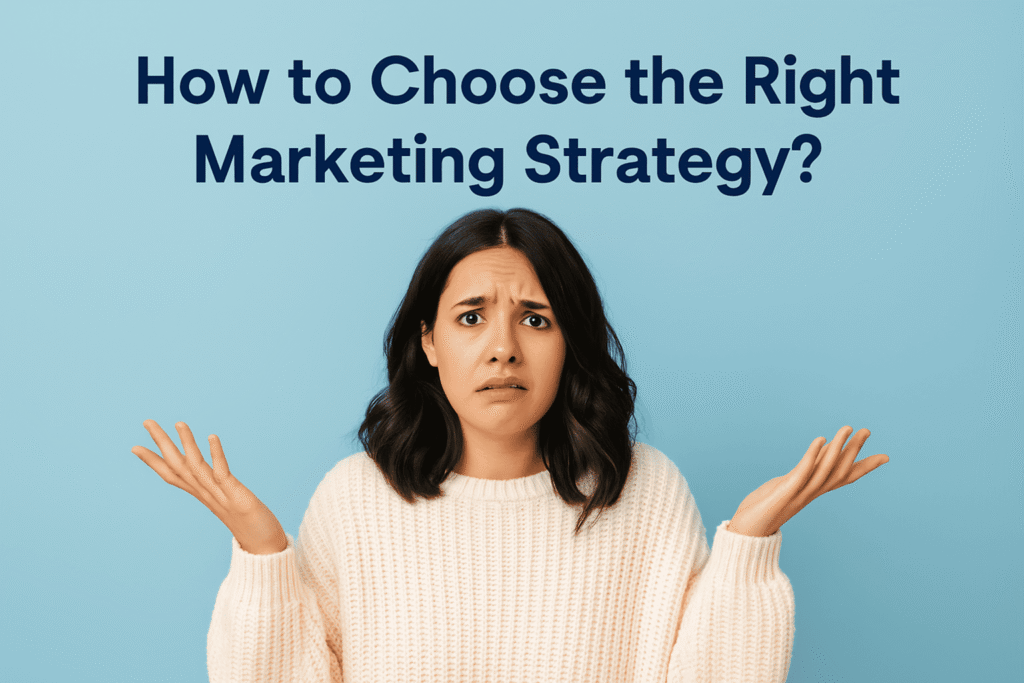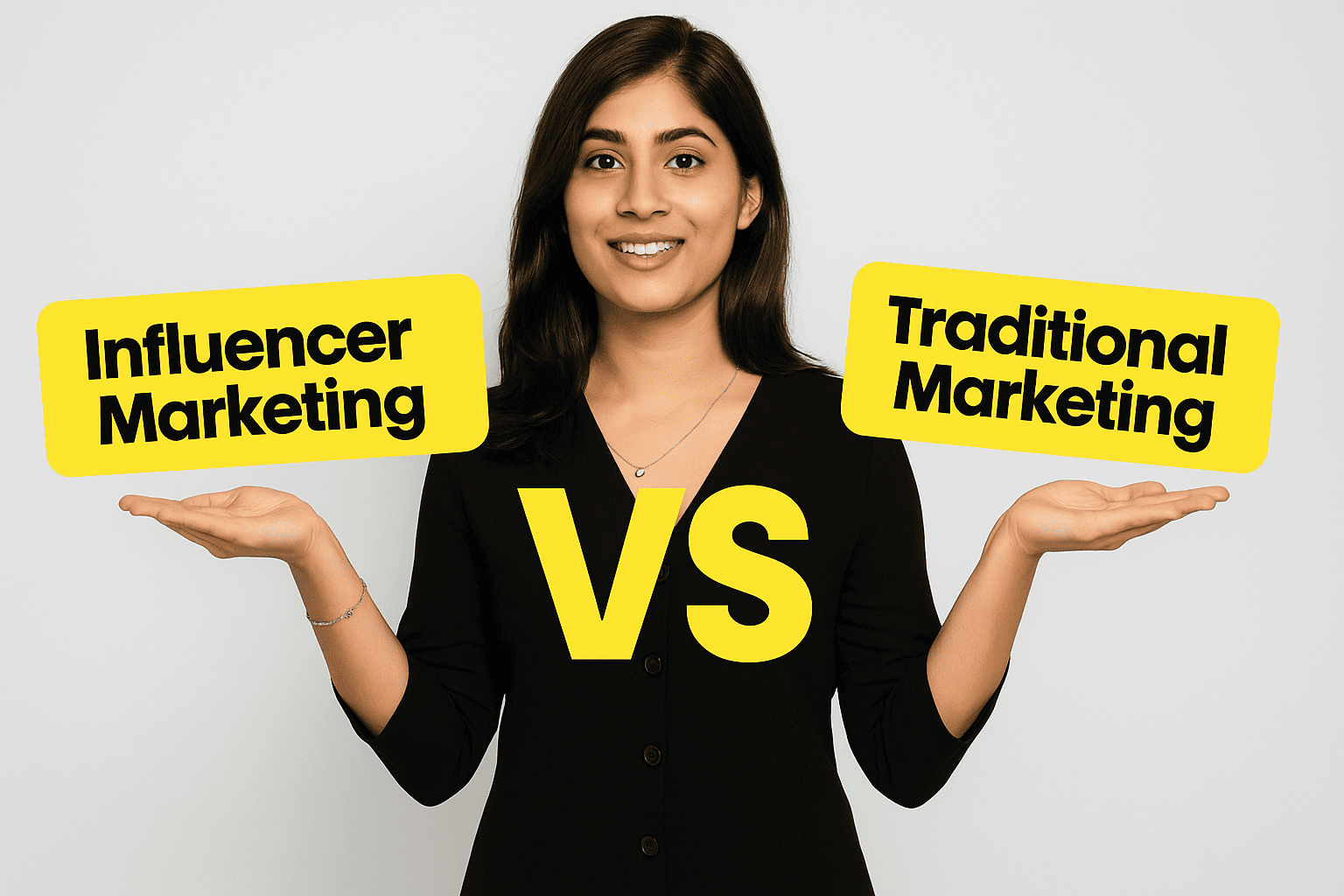In today’s competitive digital landscape, businesses face the dilemma of choosing between influencer marketing vs traditional Marketing. While traditional methods like TV, radio, and print have been effective for years, the rise of social media has shifted the focus toward influencer marketing. This blog explores the benefits, trends, and cost-effectiveness of both approaches to help brands make informed decisions.
What is influencer marketing?
Influencer marketing is a collaboration between brands and individuals with a significant online presence. These influencers promote products or services to their audience, leveraging trust and authenticity to create impact. Unlike traditional ads, which often feel salesy, influencer marketing thrives on genuine recommendations and relatable content.
Benefits of Influencer Marketing
In Influencer marketing vs traditional Marketing Why influencer marketing works is simple: it builds trust. Consumers relate more to influencers than to direct brand messages. Unlike traditional ads, influencer marketing for brands fosters authenticity and connection. A well-implemented social media influencer strategy helps brands reach niche audiences effectively, making digital marketing with influencers a preferred approach for modern businesses.
ROI in Influencer Marketing

Influencer Marketing ROI
Understanding why influencer marketing in Influencer marketing vs traditional Marketing works is key to maximizing ROI. Unlike traditional ads, influencer marketing for brands provides measurable performance insights. A strong social media influencer strategy enables brands to track engagement, conversions, and audience interaction. This shift toward digital marketing with influencers has made influencer campaigns a preferred choice over costly traditional advertisements.
Influencer Marketing Trends 2025
The future of digital marketing with influencers is rapidly evolving. Why influencer marketing works in 2025 will focus on authenticity, micro-influencers, and AI-driven partnerships. Brands that prioritize influencer marketing for brands will integrate advanced analytics into their social media influencer strategy. As influencer marketing surpasses traditional advertising vs. Influencer marketing, businesses will rely more on data-driven influencer collaborations.
Micro-Influencers vs. Celebrity Endorsements
A common debate in influencer marketing for brands is whether to choose micro-influencers or celebrities. Why influencer marketing works with micro-influencers is due to their high engagement rates and niche appeal. A well-executed social media influencer strategy helps brands establish credibility, whereas celebrities provide broad exposure. As digital marketing with influencers evolves, micro-influencers become a cost-effective alternative to traditional celebrity endorsements.
Best Platforms for Influencer Marketing
Selecting the best platforms is crucial for why influencer marketing works. Instagram, TikTok, and YouTube are at the forefront of influencer marketing for brands. A tailored social media influencer strategy ensures businesses target the right audience with high engagement potential. Compared to traditional advertising vs. digital marketing, the effectiveness of digital marketing with influencers on social media makes it an essential part of any marketing campaign.
What is Traditional marketing ?
BillBoards one of the example for traditional marketing
Traditional marketing is a type of advertising that uses offline media to reach a target audience. It includes print ads, radio and TV commercials, billboards, and direct mail.
Examples:
Print ads: Ads in newspapers and magazines, which can be classified listings or full-page spreads
Direct mail: Sales and marketing materials sent directly to consumers, often unsolicited
Billboards: Large signs that are placed in public spaces
TV commercials: Advertisements that appear on television, such as during commercial breaks
Radio commercials: Advertisements that appear on the radio
Flyers: Handouts that businesses print to promote their services
Cost of Traditional Advertising
Influencer marketing vs traditional Marketing often comes down to budget. TV ads, billboards, and radio commercials require substantial investment, whereas why influencer marketing works is due to its affordability. Influencer marketing for brands offers scalable campaigns, making it ideal for startups and large companies alike. Investing in a social media influencer strategy ensures a brand’s presence in today’s digital space, highlighting the growing importance of digital marketing with influencers.
Influencer marketing vs traditional Marketing
When comparing Influencer marketing vs traditional Marketing, both have unique strengths. While traditional ads provide mass exposure, why influencer marketing works lies in its ability to engage and create personal connections. Brands leveraging influencer marketing for brands can benefit from direct audience interaction, making a social media influencer strategy crucial for long-term brand growth. With the shift towards digital marketing with influencers, traditional methods need to innovate to stay relevant.
How to Choose the Right Marketing Strategy?

Choosing between Influencer marketing vs traditional Marketing depends on business goals. If brand awareness is a priority, why influencer marketing works is through trust-driven engagement. Small businesses can benefit from influencer marketing for brands, as it offers cost-effective solutions compared to high-priced traditional ads. By implementing a social media influencer strategy, businesses can maximize reach and ROI through digital marketing with influencers.
Hybrid Advertising Strategies
Combining Influencer marketing vs traditional Marketing offers the best of both worlds. Why influencer marketing works in a hybrid approach is its ability to humanize traditional ads. Brands integrating influencer marketing for brands with TV commercials or print ads can enhance credibility. A strategic social media influencer strategy drives engagement while ensuring digital marketing with influencers complements traditional marketing efforts.
The battle between Influencer marketing vs traditional Marketing continues, but why influencer marketing works is undeniable. Influencer marketing for brands provides an authentic, cost-effective, and engaging way to connect with audiences. A strong social media influencer strategy ensures brands maximize their online presence, making digital marketing with influencers a leading strategy in 2025 and beyond.
FAQs: Influencer Marketing vs Traditional Marketing
1. What is the main difference between influencer marketing and traditional marketing?
The key difference lies in who delivers the message and how it connects with the audience.
- Influencer marketing relies on trusted content creators who engage their audience through personal experiences and storytelling.
- Traditional marketing, on the other hand, broadcasts brand-centric messages through channels like TV, print, and radio.
In short, influencer marketing is more personal and interactive, while traditional marketing is one-way and broad.
2. Which is more cost-effective: influencer marketing or traditional marketing?
Influencer marketing is generally more cost-effective, especially for small and medium businesses.
- It allows brands to reach specific audiences with smaller budgets.
- Traditional marketing often requires higher spend on media buying, production, and distribution.
When comparing influencer marketing vs traditional marketing, the former delivers higher engagement at lower costs, especially on digital platforms.
3. Can influencer marketing replace traditional marketing completely?
Not entirely — but it can lead in many sectors.
- Influencer marketing excels in building trust, community, and organic conversations, particularly among Gen Z and millennials.
- Traditional marketing still plays a role in mass outreach, especially for legacy brands and offline campaigns.
The future lies in hybrid strategies that integrate both, depending on the brand’s audience and goals.
4. Which marketing method gives better ROI in 2025?
For most consumer-facing industries, influencer marketing shows better ROI in 2025.
- It drives measurable actions — clicks, saves, shares, and purchases — at every stage of the funnel.
- Influencer campaigns also benefit from platform algorithms that push creator content more than traditional brand ads.
When measuring ROI, influencer marketing vs traditional marketing trends favor influencer-led campaigns for performance and cost-efficiency.
5. Is influencer marketing more effective for startups than traditional marketing?
Absolutely.
- Startups benefit from the credibility and reach of influencers without spending heavily on production or ad slots.
- Micro and nano influencers offer targeted visibility, which is ideal for early-stage growth.
In the context of influencer marketing vs traditional marketing, startups often find that influencer strategies accelerate brand awareness faster, with better feedback loops and audience insights.

